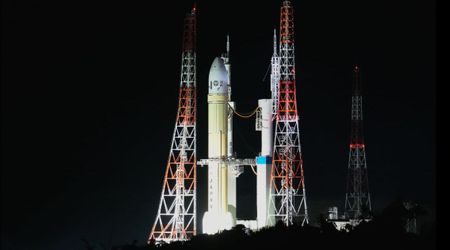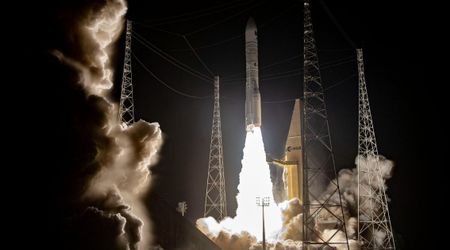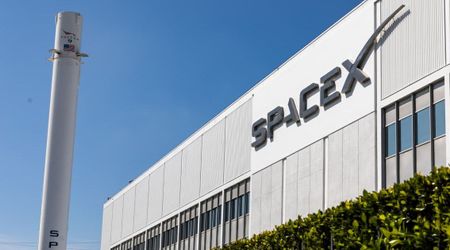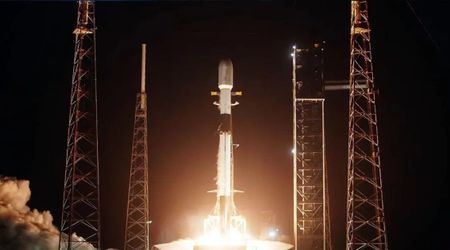Ax-4 crew is back home as mission concludes with a successful Pacific splashdown

Axiom Space's fourth private astronaut mission, Ax-4, successfully concluded its journey today with the SpaceX Crew Dragon capsule "Grace" splashing down in the Pacific Ocean off the coast of San Diego. The Splashdown occurred at 5:32 a.m. EDT (0932 GMT; 2:32 a.m. PDT), marking the end of a 20-day mission, including an 18-day stay aboard the International Space Station, according to Axiom Space. The four-member international crew, comprising Commander Peggy Whitson (USA), Pilot Shubhanshu "Shux" Shukla (India), Mission Specialist Sławosz "Suave" Uznański-Wiśniewski (Poland), and Tibor Kapu (Hungary), returned safely to Earth, per Space.com.
Splashdown of Dragon confirmed – welcome back to Earth, @AstroPeggy, Shux, @astro_slawosz, and Tibi!
— SpaceX (@SpaceX) July 15, 2025
SpaceX confirmed the successful reentry and splashdown, with earlier posts on X indicating the Crew Dragon was "on track to reenter Earth’s atmosphere and splash down." The spacecraft was also expected to announce its arrival with a brief sonic boom before splashing down. The "Grace" capsule undocked from the ISS yesterday, July 14, at 7:15 a.m. EDT (1115 GMT), beginning a 22-hour return trajectory, per Space.com.
Dragon and the @Axiom_Space Ax-4 crew are on track to reenter Earth’s atmosphere and splash down off the coast of San Diego at ~2:31 a.m. PT tomorrow.
— SpaceX (@SpaceX) July 15, 2025
Dragon will also announce its arrival with a brief sonic boom prior to splashing down in the Pacific Ocean pic.twitter.com/dS3KuHVWdH
The crew of the Axiom Mission 4 took the spaceflight on June 25 at 2:31 a.m. ET from Launch Complex 39A at NASA's Kennedy Space Center in Florida. The SpaceX Dragon spacecraft then entered orbit and was scheduled to dock with the International Space Station at approximately 7:00 a.m. on June 26, where it connected to the space-facing port at the Harmony module, as per Axiom Space.

During their 18 days on the International Space Station, the Ax-4 crew carried out more than 60 scientific experiments covering a wide range of fields, including life sciences, materials research, and technology. These investigations were sponsored by 31 countries, demonstrating the mission's significant global impact in advancing science in a microgravity environment. In addition to their research, the crew took part in over 20 outreach events. They connected with a diverse audience of government officials, students, researchers, and aspiring astronauts, using these opportunities to share their mission goals and inspire future generations about the importance of international cooperation in space, per Axiom Space.

The successful completion of the Ax-4 mission marks another milestone in commercial spaceflight, with SpaceX's Crew Dragon demonstrating its continued reliability. The space station docking port left by Ax-4 will soon be occupied by the next crewed flight as NASA and SpaceX are gearing up for the Crew-11 mission, as per Space.com. This flight is scheduled to launch on July 31 at 12:09 p.m. EDT aboard a Falcon 9 rocket from Pad 39A at Kennedy Space Center, marking the 11th operational crew rotation under NASA's Commercial Crew Program. This reboost will be performed by a SpaceX Cargo Dragon as part of the Upcoming CRS-33 resupply mission, which will be the first Cargo Dragon equipped with altitude-correction hardware. This new capability is a significant step forward in the development of a dedicated US vehicle to deorbit the ISS at the end of its operational life.
.@NASA and @SpaceX are targeting no earlier than July 31 at 12:09 p.m. EDT for the launch of the Crew-11 mission to the International Space Station, pending mission readiness. pic.twitter.com/pxkdqLXK8f
— International Space Station (@Space_Station) July 10, 2025
On Wednesday, July 16, SpaceX is also scheduled to launch the KF-01 mission on a Falcon 9 rocket from Space Launch Complex 40 (SLC-40) at Cape Canaveral Space Force Station in Florida. The launch window opens at 2:18 a.m. and will last for 27 minutes. If necessary, a backup launch opportunity is available on Thursday, July 17, with a window opening at 1:57 a.m. ET, per SpaceX.









